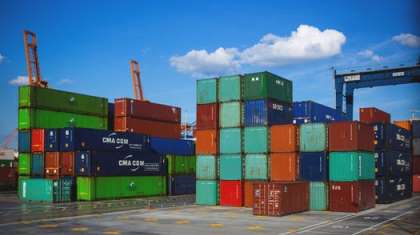How to start importing
In an age when small businesses can order products from overseas at the click of a button, the risks involved with importing can be underestimated. But regardless of the size or methods of your purchases, importing is an exercise that shouldn't be taken lightly, especially by first-timers.
Developing a comprehensive importing roadmap for your business could help reduce the potential risks. A roadmap is a plan that takes you closer to your goal in stages, reducing your business’s exposure to unnecessary costs or risks.

ESTABLISH COMPLIANCE
Before you do anything, find out whether the product you're planning to import is actually allowed to enter Australian borders. You don't want to spend time and money researching costs and market potential only to find you can't import the item in the first place.
Imported items can be subject to specific regulations or prohibited outright for many reasons such as safety grounds and international trade embargoes. To check if the product can be imported:
-
Consult the Australian Customs and Border Protection Service to find out the legality of importing the product and the permits, duties and regulations it might be subject to if you can.
And if it can be imported:
-
Consult the Department of Agriculture and Water Resources to find out if the imported item will need to be inspected on arrival in Australia.
ASSESS DEMAND
As with any product, the basics of market research apply:
-
Establish target markets by researching the potential usability of the product and the solutions it could represent to different types of consumers or businesses. Talk directly to potential customers and use surveys to establish the wants and needs that could be answered by the product.
-
Once you have target markets in mind, establish their size and future growth potential by using demographic and statistical data from the Australian Bureau of Statistics. You need to look for markets with positive long-term outlooks. If the barriers against competitors riding on your coat tails are high, you could also consider niche markets being largely ignored by other businesses.
INVESTIGATE COSTS AND PRICING
When you can estimate costs and pricing, you'll be able to use your estimates of demand to perform a break-even calculation and find out how many units of imported product you’d have to sell before seeing a profit.
Costs
As well as the standard costs of marketing a product (sales costs, domestic logistics, advertising and so on) imported products also come with their own set of specific costs. These can include:
-
Shipping
-
Insurance
-
Storage
-
Finance
-
Custom brokerage fees
-
Customs duties and levies
Unexpected costs in importing can be significant. If you miscalculate shipping costs, for example, or the value of the Australian Dollar declines dramatically, you may find you have no margin at all. It's essential you drill down into every conceivable cost before you go any further.
Pricing
The importance of astute pricing is the same as with any product. Pricing should be influenced by:
-
Target market price tolerance (the highest price they'd be willing to pay)
-
Competitor pricing
-
Demand for the product
-
How you want to position the product or your business in the marketplace (if you’re too hasty to discount your product you’re less likely to be perceived as a provider of premium quality)
Keep in mind that if you have an exclusive contract to retail or wholesale the imported product in Australia, or the barriers of entry for others to follow in your footsteps are great, then you should consider charging a premium.
WEIGH UP THE RISKS
The risks with importing can be varied. For example:
-
An unreliable supplier
-
The product could be lost in transit
-
Too much working capital tied up in import orders and finance
-
Margins could deteriorate as foreign exchange rates change
-
The imported product could be banned or subject to high tax through a trade disagreement
-
Costs could rise or production threatened by economic or political turmoil in the country of origin
Make a list of the risks in ascending order of likelihood and significance before looking at ways you could minimise exposure for your business. For example, draw up your own standard contract that provides you with cover if the supplier fails to deliver on time or talk to one of our Foreign Exchange Specialists about the ways you can protect yourself from fluctuations in the exchange rate.
If you haven’t already done so, consult an adviser with experience importing products for your industry to act as a sounding board for identifying risks and possible solutions.
RESEARCH SUPPLIERS
If the numbers stack up and the risks you've researched look avoidable and manageable, it's time to look at suppliers. This is a later step to take because it’s advisable to visit overseas suppliers in person if at all possible to lower the risk of any misunderstandings. It costs money and time to do this but far less money and time than correcting things further down the track if you don't receive the goods you were expecting.
When assessing suppliers:
-
Ask for references from customers (plus contact details so you can talk to them directly if possible)
-
Carry out thorough credit checks
-
Visit them in person. If that’s not feasible, make sure you receive samples before you make any orders
Before you approach suppliers, research the cultural differences you might have to contend with when doing business overseas to limit the chance of language or cultural barriers causing misunderstandings.
ONE LAST NOTE…
Always seek out expert opinion as soon as you can on your journey to becoming an importer:
-
Consult your Chamber of Commerce or industry association.
-
Talk to non-competitor importers with experience in the country you wish to import from
-
Find information about the country you’re doing business in from export advisors Austrade
Reproduced with permission of National Australia Bank (‘NAB’). This article was original published at https://business.nab.com.au/business/small-business/expanding-locally-and-globally/start-importing
National Australia Bank Limited. ABN 12 004 044 937 AFSL and Australian Credit Licence 230686. Any advice contained in this article has been prepared without taking into account your objectives, financial situation or needs. Before acting on any advice on this website, NAB recommends that you consider whether it is appropriate for your circumstances.
© 2018 National Australia Bank Limited ("NAB"). All rights reserved.
Important:
Any information provided by the author detailed above is separate and external to our business and our Licensee. Neither our business, nor our Licensee take any responsibility for any action or any service provided by the author.
Any links have been provided with permission for information purposes only and will take you to external websites, which are not connected to our company in any way. Note: Our company does not endorse and is not responsible for the accuracy of the contents/information contained within the linked site(s) accessible from this page. "


